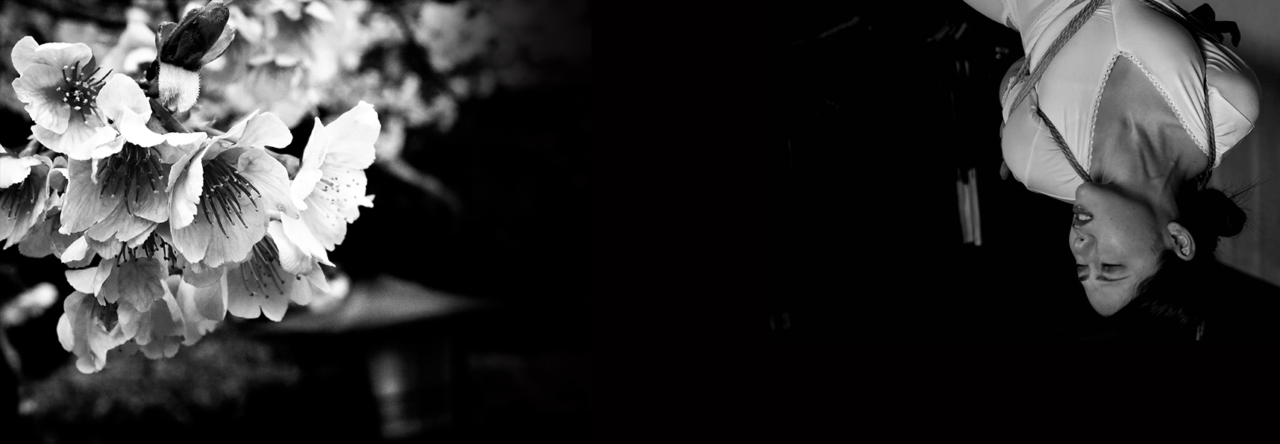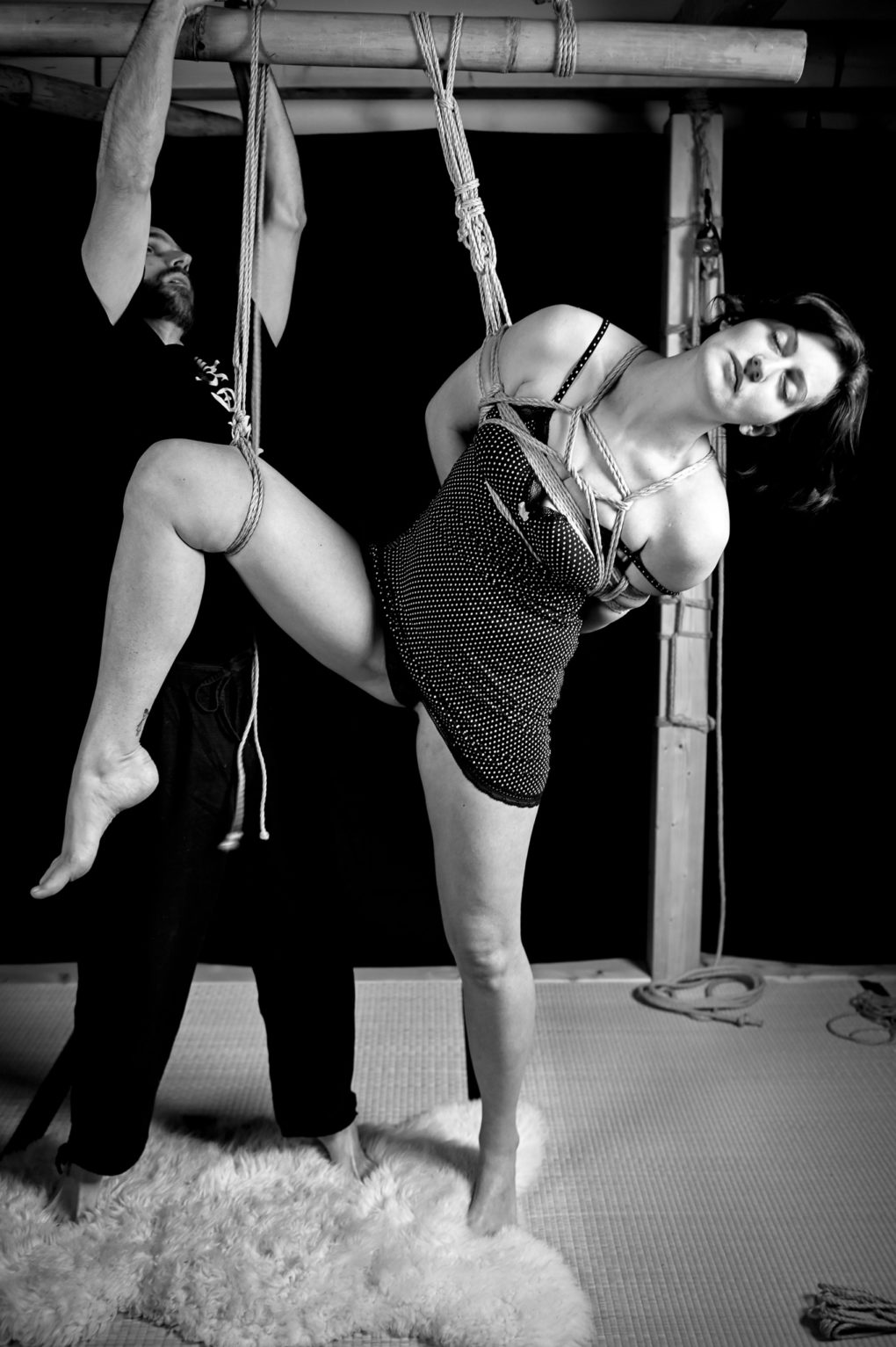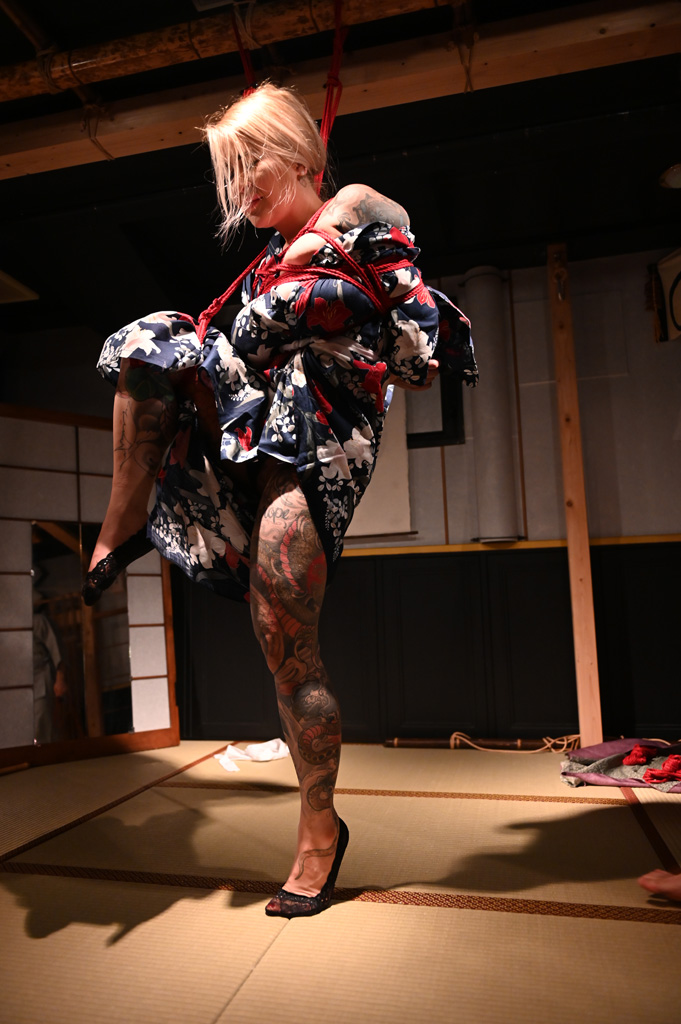Kata-ashi kaikyaku (片足開脚) is a basic pattern in Yukimura ryû. It is a newaza technique from the 4th kyû. The kata-ashi kaikyaku is an advanced form that requires some technique and experience. It consists of the Yukimura handcuff and the Yukimura gote.
Bakushi thereby puts the body sideways. Then Bakushi fixes the leg above at the suspension point. In this way, the pelvis is opened, creating a subtle play with rope tension and exposure of ukete. While Bakushi varies the position of the leg, the nawajiri serves as a line of communication.
Basically, the kata-ashi kaikyaku is a partial suspension. However, this is often not perceived as such, because the body is almost completely on the floor. However, the form language actively uses the suspension point to draw triangles and diagonals. These are reflected in the position and posture of Ukete’s leg and body.
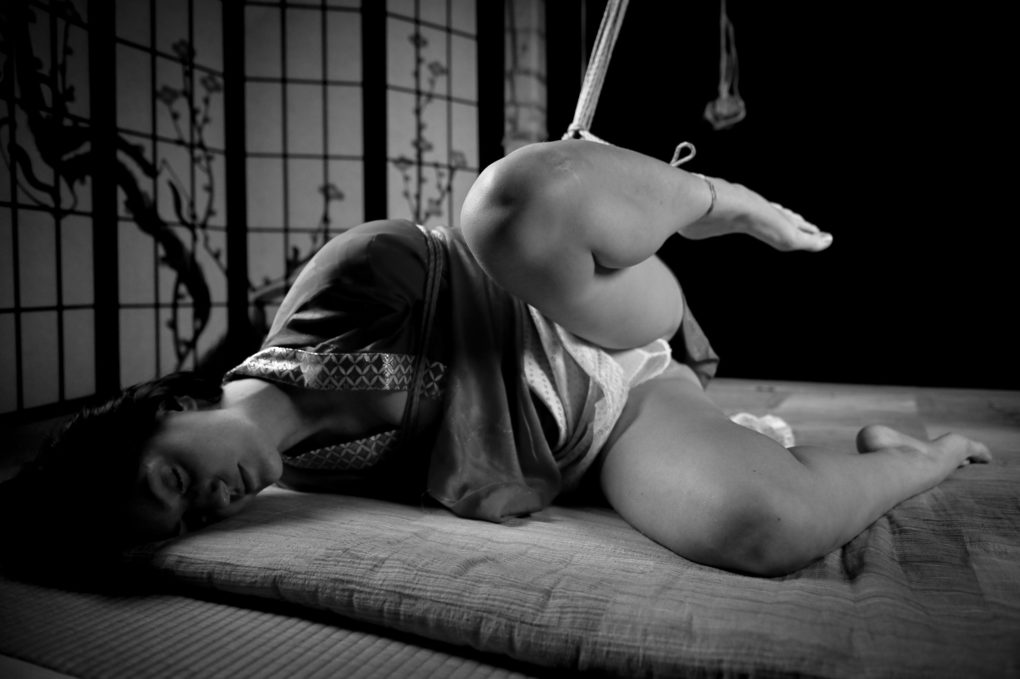
Although the basic posture is relaxed, seme plays a role. Bakushi raises or lowers the ankles, creating tension. Kotobazeme is also an important factor. This pattern is often performed with ropes that are only 4mm thick. This creates more pressure on the places where the rope touches the body and the impulses through the rope become clearer.
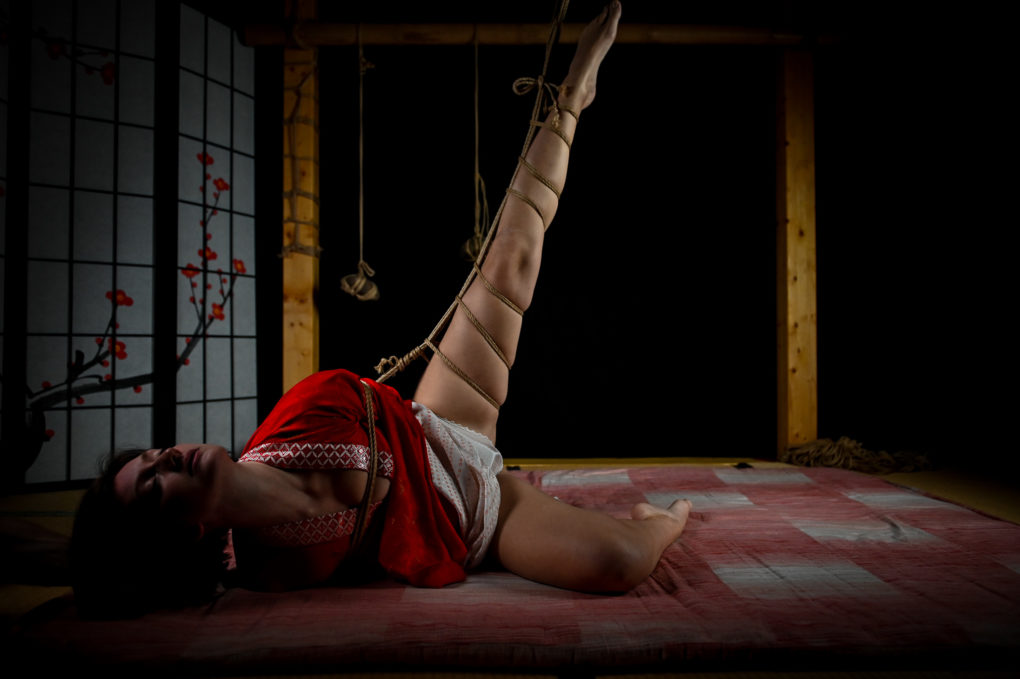
Another important point is the pose. Especially the upper leg, which is fixed only at the ankle, plays an important role. The interaction between the partners must be right to create graceful and sensual impressions. A challenge here is the non-verbal communication, which is mainly done through the Nawajiri. To emphasize one’s own feeling correctly, so that the other person feels it as well, is the prerequisite for a harmonious rhythm.



